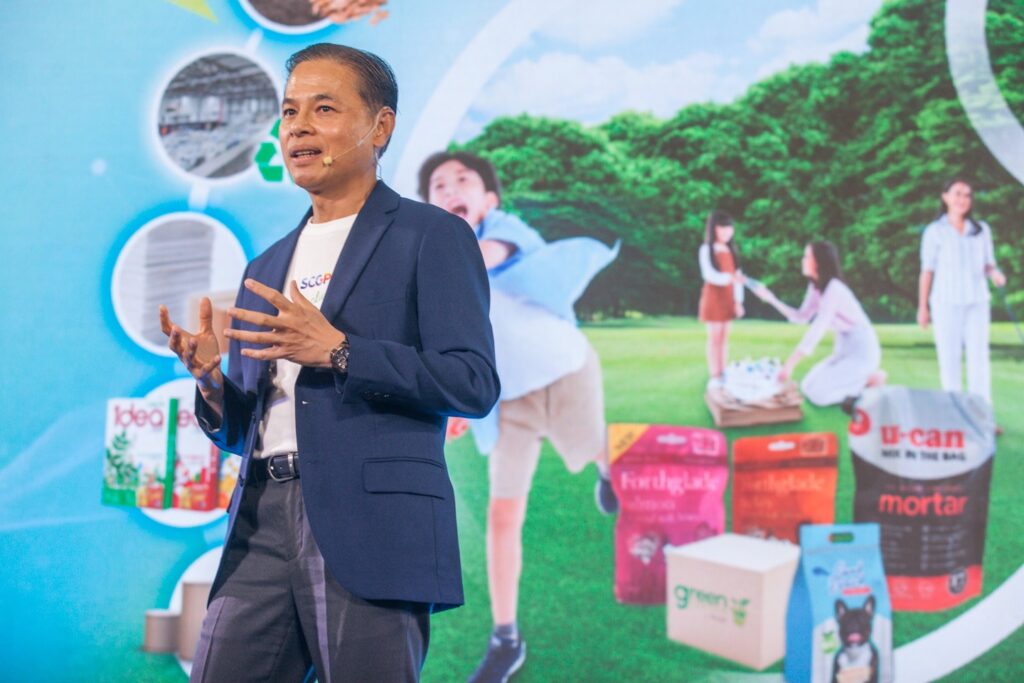News
SCGP Strengthens Integrated Packaging Solutions in ASEAN with Five Strategies for Sustainable Growth

At this moment, the world is facing a crisis with severe impacts from climate change and environmental challenges. Businesses around the globe recognize the importance of these issues and are shifting their strategies and operations to align with ESG (Environmental, Social and Governance) framework. This is to prepare for tackling future challenges and achieving long-term sustainable growth.
Similarly, SCG Packaging Public Company Limited, or SCGP, a leading packaging company in ASEAN, places significant emphasis on ESG. Wichan Jitpukdee, CEO of SCGP, highlighted the company’s operational plans, noting that the packaging industry in ASEAN is continuously recovering. This recovery is driven by innovation, economic factors, manufacturing, exports, and Thailand’s thriving tourism sector, which have increased demand for packaging across industries. The integrated packaging solutions business has seen sales growth across all product groups, with signs of recovery in durable goods packaging such as clothing and footwear. Meanwhile, the packaging paper business has benefited from increased domestic demand and exports in certain areas, especially in South Asia. The pulp and paper business has also experienced a rise in foodservice packaging sales, driven by the recovery of the tourism sector.
SCGP has advanced with five key strategies to drive sustainable business operations and ensure quality growth. These strategies include: 1. Expanding production capacity in line with economic growth rates (GDP) and utilizing merger and partnership (M&P) strategies in businesses with growth potential, such as consumer packaging, paper packaging, and health and medical supplies & labware businesses. This expansion aims to meet the continuously recovering demand for packaging from manufacturing and exports; 2. Enhancing customer experience and innovation by addressing customer pain points. For example, SCGP has introduced easy-peel innovations for yogurt packaging lids, ensuring a mess-free consumer experience; 3. Implementing Operational Excellence with “B2B2C” customers by integrating B2C and B2B business models. This approach aims to create a business that perfectly meets consumer demands by connecting business owners directly with other businesses and end consumers; 4. Conducting business with ESG framework, such as using Post-Consumer Recycled Resin (PCR) in rigid plastic packaging production. This initiative helps reduce the generation of new plastics and promotes green packaging. SCGP also produces paper with a recycling content of up to 99.6%; and 5. Focusing on People and Capability, promoting employee skill enhancement and development to achieve better performance and excellence in capabilities.
“It is evident that everything is driven by People and Capability. We have successfully driven business growth in 10 countries using these five strategies, with the understanding that our role is to deliver lifestyles that enhance consumer convenience. If asked whether our products have a wow factor, they may not, but what matters is the value for money and the enhancement of the overall experience.”
Furthermore, Wichan highlighted a series of innovations demonstrating that SCGP can align its business with every dimension of ESG. For instance, the “Carbon Reduction Solutions” in the packaging paper business have received carbon footprint certification for 55 products from the Thailand Greenhouse Gas Management Organization. These products include containerboard, corrugated paper, and coated whiteboard. There are plans to expand this certification to cover all packaging paper products in 2024, including roll and sheet paper for sack paper, plaster liner board, coated duplex board, and industrial bags.
“Innovation in resource reduction,” such as nanocellulose fibers for the paper and packaging industry, enhances paper strength while reducing weight and increasing resistance to water, oil, and oxygen. This allows for packaging production with improved protective properties, ensuring that products reach consumers in perfect condition. Additionally, it reduces energy consumption in manufacturing and adds value to plant fibers, significantly cutting carbon emissions by up to 700,000 kgCO2e through decreased importation of raw materials. The “Green Carton” corrugated containers, produced from recycled paper, exemplifies efficient recycling processes that create new paper with maintained quality and strength. Due to lighter packaging weight, this innovation reduces raw material usage, transportation energy, and costs. It saves 42.38 kilowatt-hours of energy per ton in production and reduces paper usage by over 25 grams per square meter in each product line. To date, it has helped decrease CO2 emissions by 193,000 tons and has saved approximately 5 million trees from being cut down.
The “Mix in the Bag Spout Pouch” packaging provides convenience, being easy to use and containing the exact amount needed for one-time use, significantly reducing waste. Additionally, the “Light-Weight and High-Strength Paper” packaging has been developed using pulp refining technology that induces fiber fibrillation and chemical technology to enhance paper properties. This development maintains the paper’s strength to the original product’s standards while reducing the amount of pulp used as raw materials in the production process by at least 5% compared to conventional products.
Furthermore, there are “innovations from recycled materials,” such as recycled plastic resins from the paper recycling process. These resins use waste plastic from the recycling process, adding value by turning it into new products. They serve as an alternative plastic material for manufacturers, helping to reduce production costs. This initiative began with a pilot production at Fajar, a member of SCGP in Indonesia, and is being expanded to Dayasa, another member of SCGP in Indonesia, and SCGP’s Wang Sala plant in Thailand, with a production capacity of up to 26,000 tons of recycled plastic resins per year.
Regarding “innovative recyclable packaging,” there are innovations such as mono-material packaging, which offers product protection similar to conventional packaging, can be easily recycled, and reduces landfill waste, lowering greenhouse gas emissions. Additionally, there is paper packaging for food coated with a water-based barrier coating, which effectively prevents food leakage and can be easily recycled since it is made from FSCTM 100% certified paper pulp.
Source : Daily News Newspaper, published on May 23, 2024.
